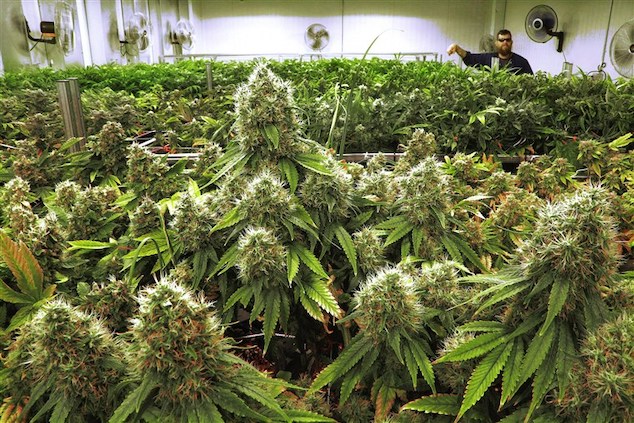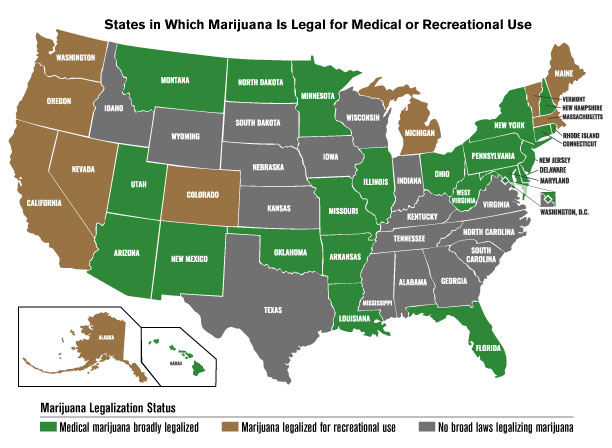
Will the United States Ever Legalize Recreational Cannabis? The fight over medicinal use, perception of criminality, conflict of state and federal laws and public perception.
Cannabis has a long and contentious history in the United States, despite its clear medical and recreational benefits. Originally outlawed in 1937 by the Marihuana Tax Act, the drug has been illegal for nearly 80 years now at the federal level. The tide appears to be turning, with many states decriminalizing cannabis, or legalizing it for medical purposes, recreational purposes, or both. It now seems like an inevitability that recreational cannabis will become legalized in the United States; the question is, how long will it take?
The Current State of Cannabis Laws
Let’s start by examining the current state of cannabis laws. The biggest factor to note here is the discrepancy between federal-level laws and state-level laws. Cannabis remains largely illegal at the federal level, while individual states in the country are passing their own laws allowing cannabis use by the general public.
In 2014, the Rohrabacher-Farr amendment prohibited the federal-level Justice Department (including the DEA) from interfering with state-level medical cannabis laws. In other words, the federal government has agreed to allow states to make their own decisions with regard to marijuana. In 2018, the 2018 farm bill legalized low-THC varieties of hemp across the nation, and de-scheduled the hemp byproduct cannabidiol (CBD) from the Controlled Substances Act.
State-by-state, you’ll find a full spectrum of support levels for cannabis. In multiple states, including Idaho, Louisiana, South Carolina, and Alabama, cannabis is still fully illegal. In other states, like California, Washington, Oregon, Michigan, Colorado, and Maine, cannabis is practically fully legal. Most other states fall into something of a gray area, legalizing marijuana for medicinal purposes and/or decriminalizing it, but refraining from making the drug completely legal.

State Laws following bell curve in legalizing recreational cannabis:
Even in states with mixed cannabis laws, such as Florida, it’s possible for anyone with a qualifying medical condition to gain access to cannabis, taking advantage of the health and recreational experiences built around it.
In short, state-level laws follow something of a bell curve; there are a handful of states at each of two ends of the spectrum, with the progressive states fully legalizing the drug and the most conservative states completely rendering it illegal. All the “average” states in between have mixed laws—which is certainly better for long-term legalization than complete criminalization. Additionally, nearly all new laws and changes seem oriented toward the direction of legalization; no states are outlawing marijuana after legalizing it for medicinal purposes, for instance. That though hasn’t stopped the federal government from still prohibiting pot use.
Public Attitudes
We also need to think about the attitudes of the general public. Lawmakers at the federal level often turn to the wants and needs of their constituents when considering laws to introduce and/or pass. If the general public in the United States is overwhelmingly in support of legalizing cannabis for recreational purposes, lawmakers won’t have much of an option to turn them down.
Currently, 62 percent of Americans overall say they’re in favor of legalizing the drug. Another 34 percent say they’re opposed to it. These are interesting and important figures, but what’s really important is how they’ve developed over time. It seems the tipping point was around 2010, when Americans were split 50/50 on the topic.
Just a few years before that, 60 percent of Americans were opposed to legalization, with only 32 percent of Americans supporting legalization; in other words, the landscape was reversed just over 10 years ago. Generally, the further back you go, the bigger the gap becomes; in 1969, 84 percent of Americans wanted cannabis to remain illegal, while a mere 12 percent supported its legalization.
It took nearly 40 years to get from 12 percent of people in favor of legalization to 32 percent, and just over 10 years to get from 32 percent to 62 percent. If we continue to follow this trend, it seems reasonable to think that within another 10 years, we’ll climb from 62 percent to somewhere in the 90 percent range.
Members of the Silent Generation (i.e., those born from roughly 1928 to 1945) tend to be the least in favor of marijuana legalization, at 39 percent in support. As older generations pass and younger generations come of age, it’s likely that the overall public attitudes toward legalization will shift toward legalization.
The Bottom Line
We seem on a healthy and consistent trajectory toward legalizing cannabis in the United States. It seems likely that states will continue passing laws to make cannabis more accessible, gradually, until the attitudes of the general public shift enough to allow federal lawmakers to step in and take action. As more people start using cannabis freely, these attitude changes could even accelerate. Based on the trajectory of legalization favoritism, it seems likely that we’ll reach an overwhelming majority of Americans in favor of legalization within the next 10 years.






